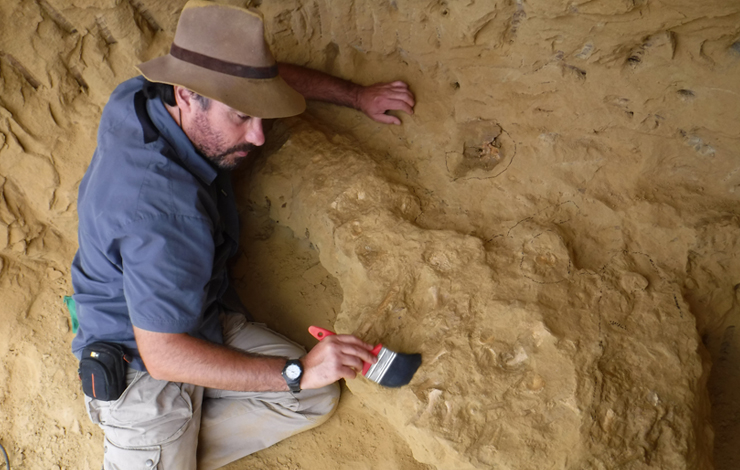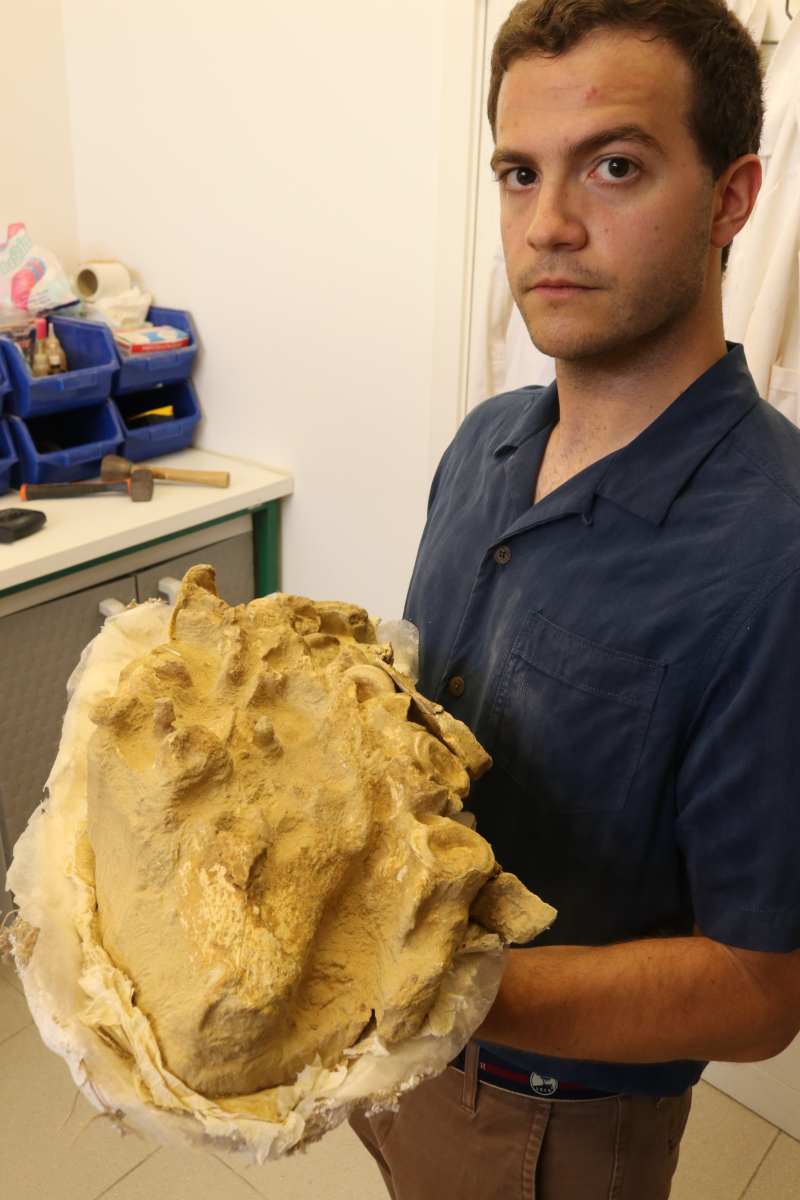30-08-2021

One of the most complete plesiosaurs in Africa was discovered in Angola by paleontologists from Universidade NOVA de Lisboa. This new study published in the prestigious PlosOne journal reveals the most complete plesiosaur skull from Sub-Saharan Africa, discovered and excavated in Namibe province, Angola, by Octávio Mateus, in 2017.
The study of this 72-million-year-old marine reptile was the result of the Master's thesis in Paleontology at the Universidade NOVA de Lisboa in association with the University of Évora, by Miguel Marx.
In addition to being the most complete plesiosaur in sub-Saharan Africa, the finding is important because it has a well-preserved and articulated skull.
Elasmosaurid plesiosaurians, similar to the mythical Loch Ness monster, could reach 20 meters in length, with small heads and very long necks.
The well-preserved three-dimensional nature of the skull offers rare insight into the cranial anatomy of elasmosaurid plesiosaurians. The new specimen of Cardiocorax mukulu - as it was classified - was recovered from rocks of the Late Cretaceous, about 72 million years old.
The laboratory work was performed at NOVA School of Science and Technology. The study's lead author, Miguel Marx, completed his Masters in Portugal and will start his PhD at the University of Lund, Sweden, later this month.
Other co-authors include Octávio Mateus of the Universidade NOVA de Lisboa and Museu da Lourinhã, Louis Jacobs and Michael Polcyn of the Southern Methodist University in the United States, Anne Schulp of the Naturalis Biodiversity Center and the University of Utrecht in the Netherlands; and Olímpio Gonçalves from the Agostinho Neto University in Angola.
Many of the Angola fossils collected by this team are currently on display at the Smithsonian's National Museum of Natural History, Washington, in the temporary exhibition "Sea Monsters Unearthed". Afterwards, they pass through Portugal, before they all return definitively to Angola. Some fossils of this species can also be currently seen at the Museu da Lourinhã before returning to their origins.
